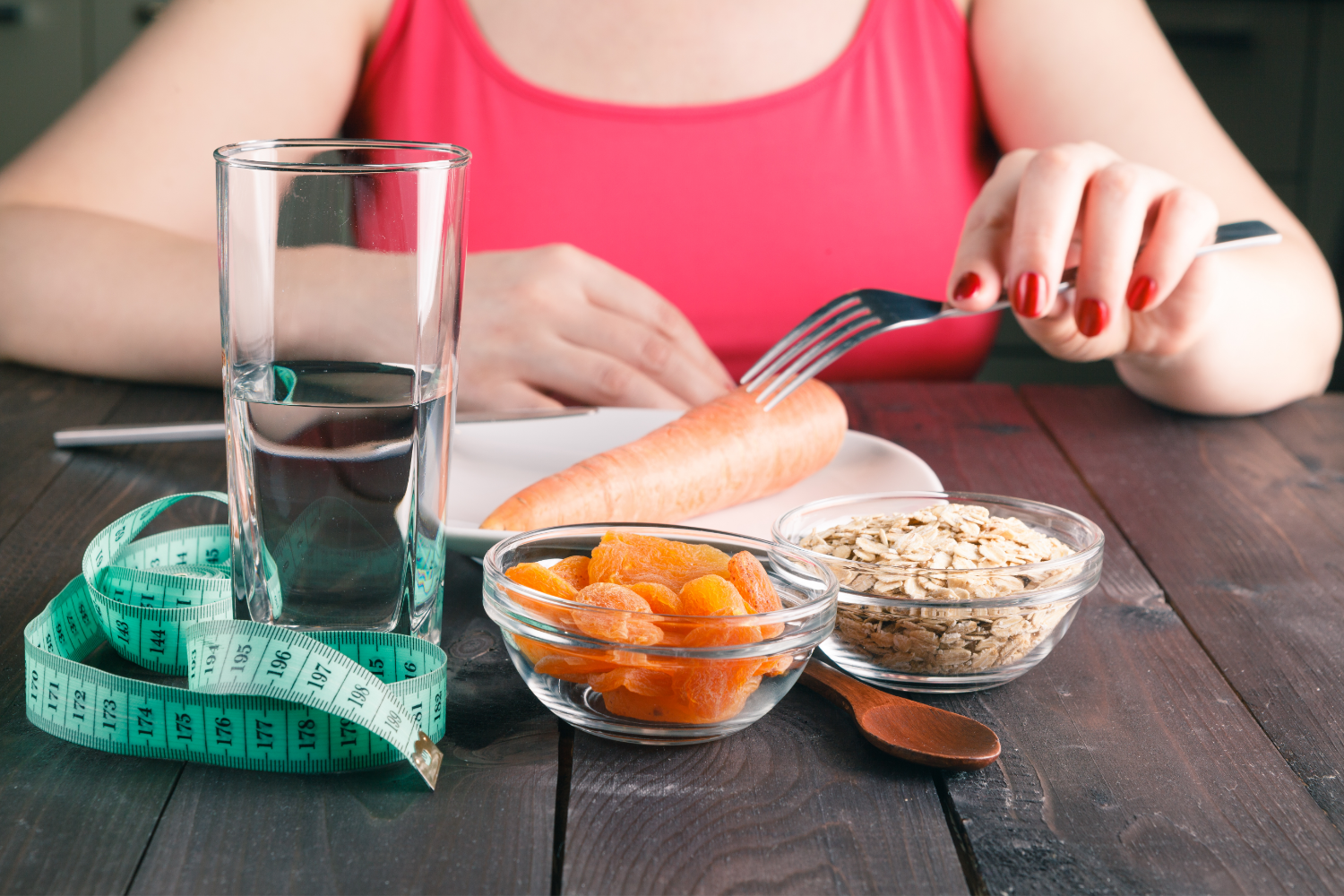Some people following a plant-based diet require more than simply excluding animal products to lose a substantial amount of weight. Sometimes you may have to dig deeper to fine-tune your dietary habits before finally reaching their weight loss goals. It took me years of research and trial and error, but I have finally come up with the 14 most common reasons people fail to lose those stubborn pounds following a plant-based diet.
You may be unable to lose weight on a plant-based diet for many reasons such as consuming too much oil, vegan junk food, other processed foods, salty foods, added sugar, or high-fat plant-foods. You could also be failing to lose weight by not eating enough starches, raw plant foods, above-ground veggies, legumes, and other satiating plant foods.
Those who follow a vegan diet weigh on average 30 pounds less than those consuming the standard Western diet.
Dr. Neal Barnard
1. Oil
Oil is the number one cause for concern when it comes to vegan weight loss that has either come to a plateau or doesn’t seem to be moving at all. The most calorie-dense food on the planet is oil! At a whopping 120 calories per tablespoon, oil is not the health food it has been portrayed as in recent years.
High fat diets cause weight gain and oil is 100% liquid fat.
Oil is what is left over when you strip most of the nutrients from a natural food substance. For example, take an olive. A whole olive is perfectly healthy. But when you extract the fiber, water, antioxidants, phytochemicals, protein, carbohydrates, vitamins, minerals, and other micronutrients from the olive you are left with olive oil.
When fats are ingested in the form of extracted oils, they are rapidly and efficiently absorbed by the body and immediately converted into body fat.
Dr. Joel Fuhrman
On the flip side, when the same fats are eaten in whole foods, such as seeds, nuts, and avocado, their absorption would be much slower, over hours, not minutes. Ultimately, these fats would be mostly burned for our energy needs and not stored.
Hidden sources of dietary oil can be found in the following:
- nut-butters
- spaghetti and pizza sauces
- salad dressings
- frozen pre-made dinners
- cookies
- cakes
- bread
- pasta
- crackers
- hummus
- vegan convenience foods
- energy bars
- cereal
- pancakes, waffles, etc.
Try making sauces, dips, dressings, and baked goods with whole-food alternatives, like tahini, seed mixes, or nut blends.
2. Processed vegan substitutes
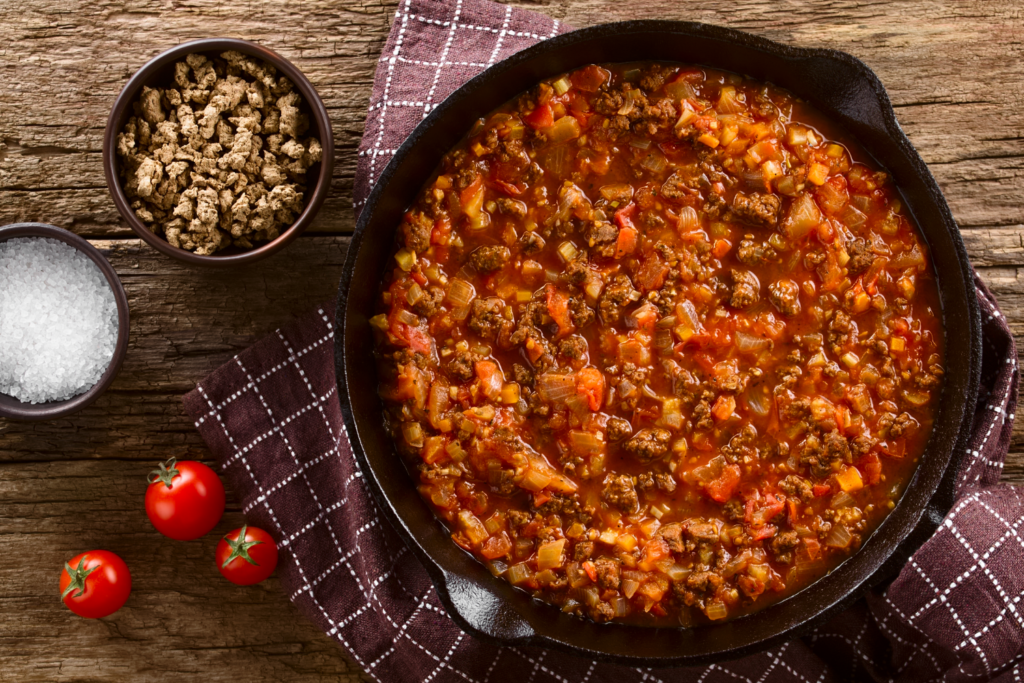
When switching to an all plant-based diet it can be very tempting to simply swap out all your old dietary favorites with vegan imitations. Today, it’s easy to find vegan breakfast sausages, brownies, chocolate, hamburgers, “eggs”, bacon, cheese, yogurt, ice cream, etc.
These pseudofoods can carry just as much added fat, sugar, salt, preservatives, food dyes, and other chemicals as regular junk food. Some vegan versions are even worse than typical junk foods because they have to make up for all the natural flavors that were removed during processing.
I know it seems intuitive to stick with cooking strategies that you know and are familiar with, but I promise you will not get the weight loss results you are seeking by substituting out your usual go-to’s for vegan alternatives.
It is much more beneficial for your waistline and your health to learn how to cook with whole natural foods like potatoes, rice, quinoa, squash, lentils, and beans. These are your plant-based staples. Now just add some fruits, veggies, seeds, and nuts to your major starches and you will have a nutritious, low-calorie meal every time.
3. Salt
Salt may seem harmless because it is an essential part of our diet, but don’t be fooled. Studies have compared those who eat a meal with added salt vs those eating meals without added salt and those who consumed the salty meal consistently go on to consume more calories than those eating the meal without salt.
There are properties in concentrated forms of salt that trick our brains into thinking we have eaten less calories than we actually have.
Think about the last time you ordered popcorn at a movie theater. Those buckets come super-sized because people tend to consume enormous amounts when sprinkled generously with salt.
When that same popcorn is consumed without salt, people tend to only eat a fraction of the calories that are typically eaten with the added salt.
Simply put, salt messes with your satiety mechanisms and can leave you feeling as if you have eaten less than you actually have. This inevitably leads to weight gain.
The great thing about our taste preference for salt is that it adapts with the amount your taste receptors are exposed to. So the longer you go without added salt, the better natural foods begin to taste. On the other hand, the more salt you add to your food the more your taste receptors anticipate, and thus, the more you feel compelled to use.
You can typically cleanse your taste preference for salty foods completely within 30 to 90 days. That may seem like a long time, but given the 20 to 70 years you have left to live, it’s really not that long.
You can choose to cut back gradually, but cold turkey will get you there much faster.
4. Sugar
Added sugars are detrimental to your weight loss attempts in a similar way that added salts are. They both hijack your taste receptor mechanisms and leave you craving for more.
Anytime you isolate a portion of a particular food, as with beet sugar in this case, you alter the way your body perceives and utilizes it. Beets are perfectly healthy when consumed whole. But after you extract the sugar molecules you are left with a completely different substance.
When you feel a craving for something it tends to be for something unnatural. And by “unnatural” I mean you would never find refined sugar crystals in nature.
So when you crave sugar, you know that your body is seeking something that has been changed or extracted from its natural form because you have recently consumed something of that nature. I doubt you have ever experienced a craving for broccoli or rice, for instance.
The good news is that cravings go away as long as you haven’t recently exposed your taste receptors to an unnatural substance. But even if you have consumed something with refined sugar lately, your receptors will adapt and eventually lose the signal for the specific craving.
There may be a spontaneous recovery for the craving every few months or so down the road, but the signal becomes fainter and fainter with less exposure.
The bottom line is that sugar causes weight gain directly and indirectly by messing with your satiety mechanisms, creating cravings, and spiking your blood sugar. It is best to remove all added sugars from your diet, especially while attempting to lose weight.
Check all food labels. Sugar tends to hide in condiments, breakfast cereals, peanut butter, and most process foods. You are always safe sticking with whole natural foods like veggies, fruits, and whole grains.
5. High-calorie plant foods
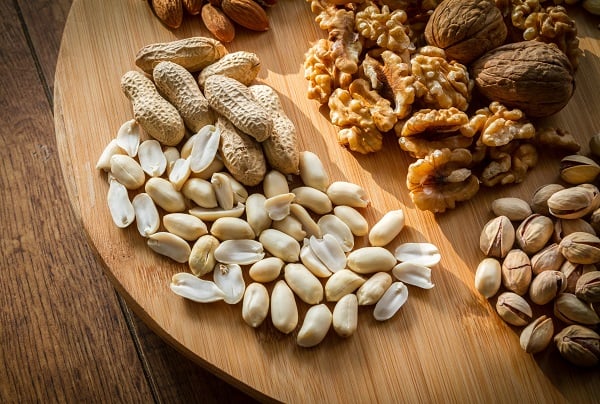
Most people overlook the high calorie profile of certain plant foods just because they are healthy natural foods. The following items should be eaten sparingly or not at all while attempting to lose weight:
- nuts
- seeds
- avocado
- dried fruit
- coconut
Nuts have an average of 813 calories per cup! That is more calories than most people eat in a single meal. Although there are many nutritious aspects of consuming nuts, they are not conducive to weight loss.
Seeds, avocados, dried fruits, and coconuts are extremely calorie dense as well. Each of these high-calorie plant foods should be eaten as part of a dish, as opposed to eating them by themselves by the handful.
Healthy fats are an essential part of our diet. There are traces of fat found throughout plant foods, however. Continue eating a variety of plant-based meal options containing minimal amounts of the above listed items and you should be able to meet your weight loss goals.
6. Eat more raw foods
Cooking foods does have its advantages. The heat may activate specific enzymes and phytonutrients that may have not otherwise been activated if eaten raw. These advantages aside, eating raw plant foods is more conducive to weight loss.
When we eat raw, completely unprocessed food our bodies have to work harder to break down those particles and metabolize them into useful components our bodies can utilize. Cooking takes some of the work out of this process and thus does not require as many calories to break down.
Take a cup of celery for example, one cup of raw chopped celery contains about 16 calories. While a cup of boiled celery contains about 27 calories.
Incorporating more raw foods into your diet may take some practice, but once you get used to it this will become an easy habit.
To start, be sure to eat one giant salad per day filled with a variety of colorful raw veggies like bell peppers, tomatoes, red cabbage, olives, kale, arugula, broccoli sprouts, carrots, and cucumbers. You can add smaller side salads throughout your day, as well.
Make some oil-free homemade hummus to have with raw veggies whenever you get hungry. Also keep raw fruit on hand for easy snacks.
You can also add fresh greens to almost any meal to add a crunchy raw component. Fresh berries are great to add to any healthy plant-based breakfast selection.
Get creative. You may find some raw flavors that go with foods you’ve never considered combining before.
7. Eat more above-ground veggies
These veggies tend to have the lowest calorie content of any food available.
These include items such as:
- cucumbers
- cauliflower
- kale
- asparagus
- zucchini
- broccoli
- spinach
- eggplant
- tomato
- green beans
- Brussel’s sprouts
- bell peppers
Incorporate more of these fiber and nutrient rich foods into your daily intake and you are bound to shed those stubborn pounds.
Not only are these foods low in calories, but they also have high water content. They will help to fill up your stomach and signal to your stretch receptors that you have had enough to eat.
The high fiber found in above-ground veggies will also keep you satiated (feeling full) until it is time for your next meal.
Lastly, the high nutrient content in these foods will also curb your appetite since you will not be lacking in any essential nutrients by following this weight loss plan.
Eat these veggies raw for the added metabolic weight loss factor.
8. Eat plenty of starch
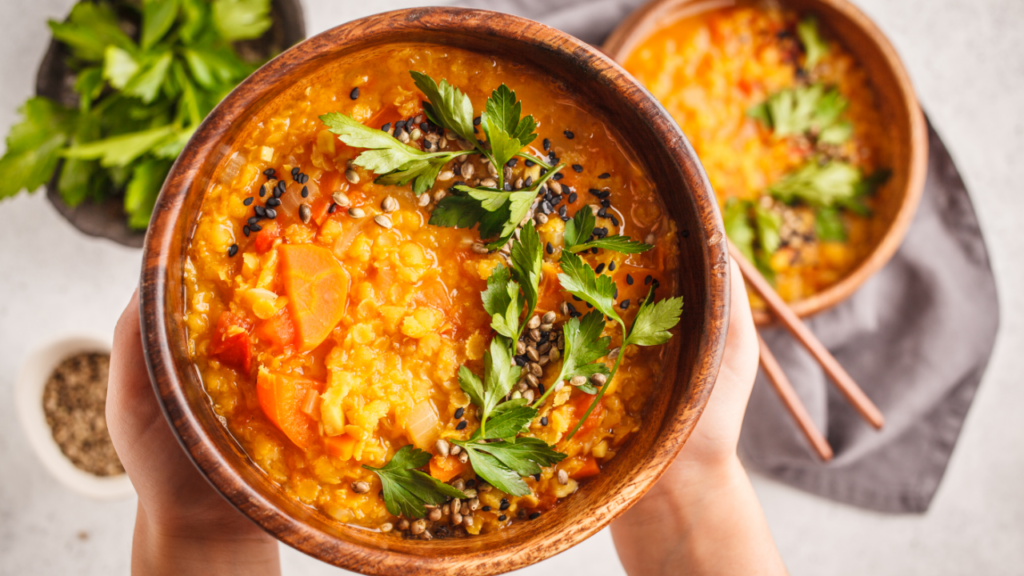
Many people make the mistake of equating starches with refined carbohydrates or fattening food sources. Starches are neither. As long as you consume them in their most natural form, starches are complex carbohydrates.
Starches will not make you gain weight. In fact, it’s just the opposite; starches are so packed with fiber, water, and micronutrients that they actually help you lose weight.
Starches should be the focus of all your plant-based meals.
Try to incorporate at least one of the following options into each of your meals:
- squash
- rice (brown, wild, basmati, jasmine, etc.)
- whole wheat
- oats or oatmeal
- beans
- lentils
- potatoes
- corn or cornmeal
- quinoa
- rye
- barley
- millet
- couscous
Although you will find many processed versions of these plant foods like bread, pasta, flour, cereal, pancake mixes, etc., in the grocery store aisles, stick with the unprocessed starches.
The more you process a given food or the more natural items you extract from food the greater you increase its caloric density. For example, hulled oat groats are less processed and therefore less calorie dense than steel-cut oats. And steel-cut oats are less processed, and therefore less calorie dense than rolled oats, and so on and so forth.
The more you pulverize each oat groat the more you increase the surface area allowing for greater absorption in the body. All in all, leading to the ingestion of greater calories.
9. Eat more protein
Although it is true that protein is found in virtually all plant foods, there are certain foods that you can add to your daily intake to ensure you are getting adequate amounts.
Some of those foods are as follows:
- lentils
- soybeans
- tempeh
- quinoa
- tofu
- beans
- oatmeal
- peanuts
- almonds
- chia seeds
- hemp seeds
- rice
- potatoes
Meals with sufficient amounts of protein will help you stay full between meals and curb your appetite. There is no need to add protein powders in an attempt to get in your daily protein needs, however. The less processed foods in your diet the better.
Some individuals, like athletes and women who are pregnant or nursing, may require higher protein intakes, but don’t overdo it. Women need about 46 grams of protein per day while men require 56 grams. You can easily obtain your entire recommended daily intake by consuming two servings of soybeans or edamame.
10. Stop drinking your calories
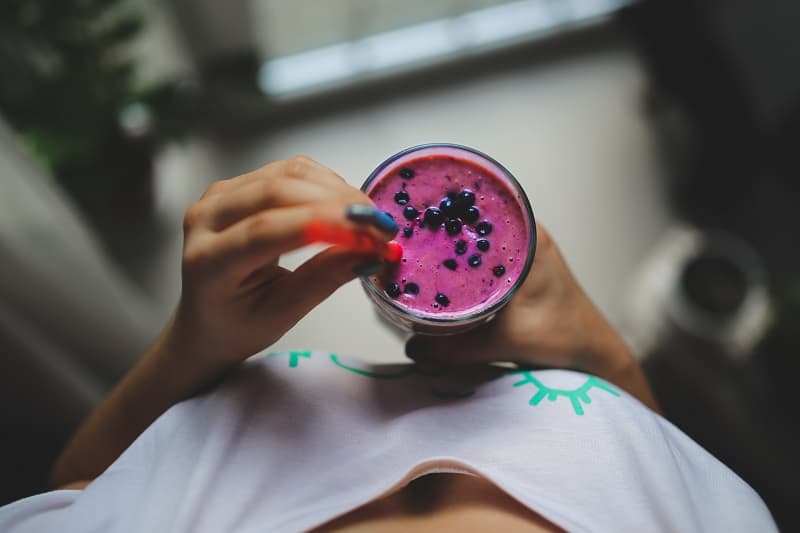
You may enjoy some nut milk and sugar with your morning coffee, or some juice with your lunch every day. These types of behaviors will set you back with your weight loss goals.
Instead of drinking fluids with calories, try drinking water only until you start seeing results from all your efforts to lose weight. From the minute you wake up in the morning until the time you go to bed you should be carrying some kind of water bottle with you where ever you go.
Always keep it on hand while you’re driving, at work, at the gym, and on your nightstand while you sleep. You are more likely to drink water if it’s actually available, and easily accessible.
You are most dehydrated when you wake up in the morning. Try drinking several cups of cold water to start your morning routine every day. Soon it will become an automatic habit like brushing your teeth before you leave your house every morning.
I try to drink about 54 ounces or 1600 milliliters each morning prior to breakfast. After you are fully hydrated, much of the plant-based food you eat during the day will provide you with a sufficient amount of water. But you should still continue to drink it throughout the day.
One easy tip to remember is to chug a glass of water each time you think you might be feeling hungry. Then, after 15-30 minutes have passed and you’re still hungry, you will know that what you are experiencing is true hunger and not just symptoms of dehydration. These can get easily misconstrued.
Some of you may have a difficult time giving up coffee or alcohol during this weight loss challenge. Just remember that these substances are not only detrimental to your weight loss goals, but they are also damaging to your health.
Try refraining from coffee and alcoholic beverages for 30 days and see how you are feeling at that point. If the caffeine headaches are too much, perhaps try a pain reliever for the time being. If you are feeling better after the initial 30 days, I want you to see if you can hit 90 days.
After three months have passed and you have successfully abstained from coffee and/or alcohol, I can almost guarantee at that point you will choose to continue on your journey without being held back by these addictive substances any longer.
11. Eating too late at night
Some interesting research has come out about the difference in metabolic functioning based on whether calories are consumed in the initial portion of the day or later on. Research shows that your morning oatmeal could amount to more calories if eaten at the end of the day as opposed to the beginning.
That’s right, you can consume the exact same meal but have it equate to a greater overall calorie intake when consumed in the evening.
How can this be? It seems as though calories are utilized more efficiently in the morning and midday hours. The mechanism is triggered by your circadian rhythms. As soon as your retina receives the signal that the sun has begun to rise, your body is most prepared to receive the bulk of your daily calories.
But the more the sun begins to set, the more your metabolism begins to slow in order to prepare your body to wind down and get ready for sleep.
This information can easily be used to your advantage. Start routinely adding the bulk of your daily calories to your breakfast and lunch.
You may prefer to skip dinner altogether, or eat something small like a snack or a salad. Make an effort to put an achievable time frame on your “feeding window”.
Basically, this refers to an allotted amount of hours you are permitted to eat during the day. For instance, I wake up before 5:00 am most days, so make sure I never make my breakfast before 7:00 am. Then after breakfast and lunch, I have a snack around 1:30 – 2:00 before I stop eating for the day.
Therefore, my feeding window is typically between 7:00 am and 2:30 pm. I found this works best for me because I have a tendency to graze in the evening. Going to bed with a belly full of food was not working out for me.
You want to have the majority of your food digested by the time you lay down to go to sleep at night. This will also benefit the quality of your sleep because your body will be able to focus on rest.
12. Getting enough sleep

Sleep deficit is an unfortunately common occurrence in most of the developed world. It seems there is just not enough time in the day to get everything done we feel is necessary.
Getting an insufficient amount of sleep at night is closely correlated with weight gain and obesity. This could be due to several reasons.
For instance, your hunger drive gets confused when you don’t get enough rest. It seems to default to a higher gear as opposed to becoming less hungry.
Not only is your hunger drive revved up with insufficient sleep, but your brain also tends to send craving signals for rich or otherwise shoddy processed foods.
So now you are eating more calories of the richer variety. You see how things can quickly spiral out of control for someone who has set meaningful weight loss goals for themselves.
This is an excellent example of where healthy subconscious habits are useful. When in a tired, foggy state it’s helpful to have a healthy autopilot ready to take the wheel and steer you away from dietary decisions you will undoubtedly regret.
Start forming those habits today and you won’t have to worry about the occasional sleepless night setting you back a few pounds each time.
It takes on average 66 days to form a new habit. Just keep at it for about two months and you will soon carry out your intentions effortlessly.
13. Dining out
One of the greatest aspects of following a plant-based diet is that you don’t waste so much money eating out. This may sound like a negative for many of you who still may be in the beginning stages of your plant-based journey. But I assure you, soon, you will prefer home-cooked meals to the over-cooked, over-salted, oily meals offered at restaurants.
The best way to ensure success with your weight-loss intentions is to learn the basics of cooking, healthy grocery shopping, and meal prep strategies. As soon as you master these skills, you will use the culinary creations you order at restaurants as your home-cooked inspirations instead of your ding out norm.
It is perfectly fine to eat rich cuisine sold at restaurants on special occasions. Birthdays, holidays, weddings, and anniversaries are some examples of special occasions.
If weight loss is your aim, dining out several times a week every week of every month is not going to help you accomplish your goals.
Don’t get me wrong, I fully understand that dining out is inescapable for regular social gatherings. A great trick I use is to eat before I go out. That way I am not tempted by the rich, sugary, and overly salted foods. I may order a bowl of fruit or some plain steamed veggies, but that’s about it.
After you have eaten a clean whole-foods plant-based diet for a number of months, restaurant food tends to taste a lot different. You will be grossed out by the over-use of oil, salt, and sugar because your taste buds will be so much more sensitive to them.
Give it some time. Soon you will prefer your own meals as opposed to dining out.
14. Overly processing your food
Smoothies, hummus, bean dips, nut-butters, and nut-milks are highly nutritious plant-based foods, but they can also set you back on the scale. As I mentioned in the “Processed vegan substitutes” section, anytime you alter your food from its natural form you are increasing its caloric concentration.
Green smoothies can be a creative way to incorporate more greens into your meals, but if your aim is weight loss, you may want to consider consuming your fruit and greens whole instead of blended.
When we process our food in a blender, we are taking all the mechanical work out of the normal digestive process. Then, when the blended mixture arrives at your small intestine, you have also already taken most of the work out of the absorption process when consuming the food in this pulverized composition.
Our bodies are designed to expend energy chewing and digesting our food in order to take in energy. When you process your food in any way, you are reducing the energy expenditure portion of the equation. And therefore, a blended apple maybe a total of 52 calories after digestion has completed, as opposed to 25 calories from a whole apple.
Dips, butters, and milks hold the same concept. Even when you mash beans into a hummus dip, you are altering that food from its natural composition and increasing its caloric density.
If eating whole plant foods this way encourages you to eat more fruits and vegetables, then by all means, continue to do so. These tips are not meant to be rigid commandments, they are simply extra tools you can keep in your pocket if you decide you need them.
Karli Jackson

